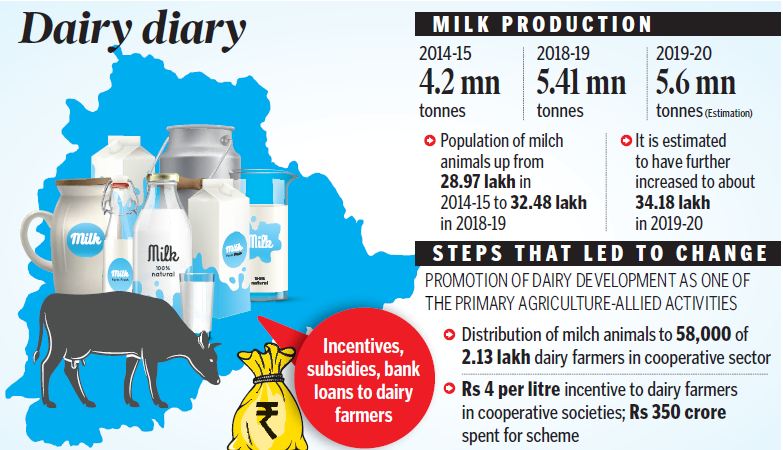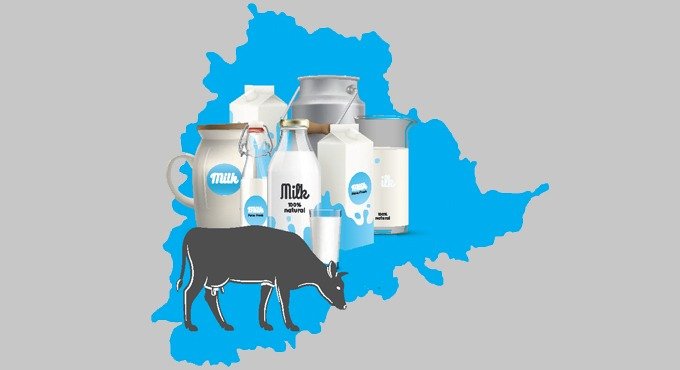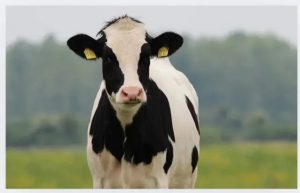Hyderabad: A silent-but-steady White Revolution is brewing in Telangana. Milk production in the State grew by 1.2 million tonnes since bifurcation from 4.2 million tonnes in 2014-15 to 5.41 million tonnes in 2018-19 and then to an estimated 5.61 million tonnes in 2019-20.
The subtle-but-striking increase in milk production indicates the State government’s efforts in convincing farmers to reduce dependence on conventional farming and increase their livelihood sources through livestock farming, especially dairy development.
As per the Union government’s Livestock Census 2019 and the State government’s Socio-Economic Outlook 2020, the population of milch animals, including exotic, crossbreed and indigenous cows along with buffaloes, increased from 28.97 lakh in 2014-15 to 32.48 lakh in 2018-19. It is estimated to have increased to about 34.18 lakh in 2019-20. During the years, milk production too increased considerably from 4.2 million tonnes in 2014-15 to an estimated 5.61 million tonnes in 2019-20.
The State is ranked eighth in livestock population and 13th in milk production. A majority of the milk produced in the State is being procured by the private dairies and is largely utilised for manufacturing dairy products. As against the daily sale of milk to the tune of 22 lakh litres in the State, the four cooperative dairies under the Telangana State Dairy Development Cooperative Federation Limited (TDDCFL) supply 7 lakh litres.
“The cooperative dairies have increased their daily procurement due to proactive measures by the Telangana government since the State formation. Four cooperative dairies are supplying an average 7 lakh litres of milk per day in 2020-21 against a meagre 1 lakh litres per day in 2014-15,” an official of TDDCFL told ‘Telangana Today’.
The visible increase in milk production is being attributed to farmers’ responding positively to Chief Minister K Chandrashekhar Rao’s call to improve their income sources rather than depending only on conventional farming. Accordingly, the State government has been promoting dairy development as one of the primary agriculture-allied sectors besides offering incentives and subsidies to dairy farmers.

Besides facilitating subsidised loans through banks and other financial institutions, the State government launched a cattle distribution scheme for dairy farmers in the cooperative sector. Milch animals were distributed to about 58,000 of total 2.13 lakh dairy farmers in the cooperative sector. Further, an incentive of Rs 4 per litre is being provided to dairy farmers in cooperative societies for which the State government spent about Rs 350 crore.
As per the State Socio-Economic Outlook 2020, Telangana’s livestock sector supports about 25.82 lakh families with the value of Rs 66,403 crore at current prices. Within the agricultural and allied sectors, livestock is a large contributor with 7.6 per cent to the State Gross Domestic Product (2019-20 AE) and this share has been increasing in recent years. The share of contribution of livestock grew from 5.6 per cent of total Gross Value Added (GVA) in current prices in 2010-11 to 7.6 per cent of the total GVA in 2019-20.
















